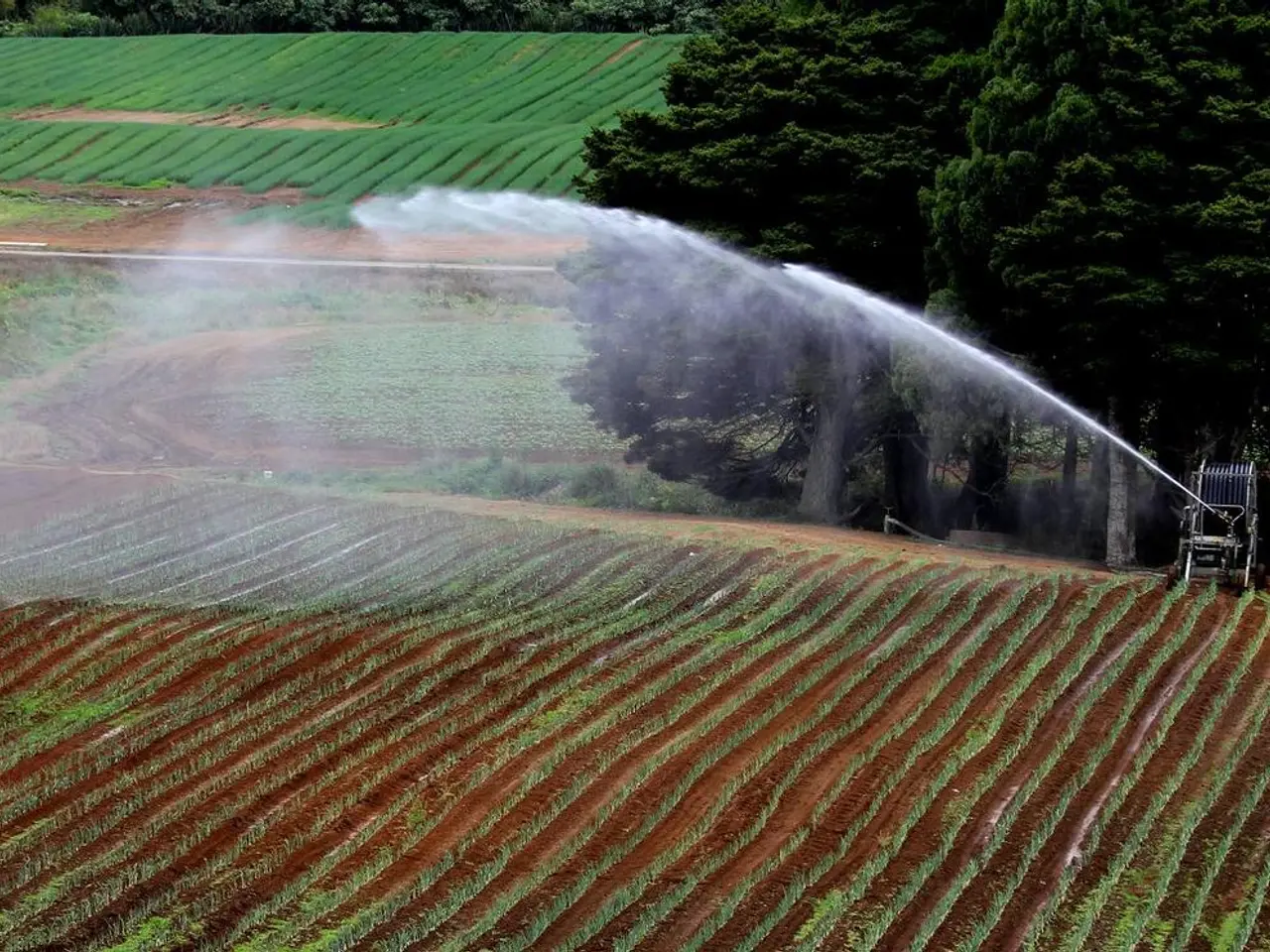AI's Influence on Traditional Indian Businesses: Benefits and Obstacles
In a bid to promote sustainability, productivity, and ease of work, the government and industry in India are focusing their efforts on digital literature dissemination and AI tool availability for small farms. These technologies are designed specifically for agricultural needs, enabling targeted plant care, better animal monitoring, and more efficient resource use through digitally linked processes.
One such technology is computer vision in manufacturing, which can detect minor defects, thereby reducing waste and ensuring high-quality output. AI models are also offering more accurate weather forecasting, allowing farmers to adjust planting and harvesting schedules and reduce climate-related risks.
AI is significantly impacting the agriculture sector in India by enabling predictive analytics, precision farming, and automation. Machine learning algorithms, for instance, enable crop yield prediction, improving harvest planning and minimizing post-harvest losses. AI-powered precision farming tools, such as satellite imagery, remote sensors, and drones, help monitor crop health, soil quality, and water usage.
The AI revolution in traditional industries creates a demand for a workforce skilled in data science, machine learning, and digital tools. However, India faces a substantial skills gap, particularly in semi-urban and rural regions, where digital literacy and technical expertise are limited. Addressing this gap requires a focused effort to reskill and upskill the existing workforce to help industries make the transition to AI-powered systems.
AI is also transforming India's manufacturing sector by streamlining operations, enhancing quality control, and optimizing supply chains. Predictive maintenance, powered by machine learning, analyzes historical data to predict equipment failures before they happen, ensuring continuous production and reducing downtime. AI-driven robotics and automation in warehouses are facilitating faster sorting, picking, and packing, improving turnaround times and operational efficiency.
In the logistics sector, AI-powered route optimization systems are being introduced, analyzing real-time data to suggest optimal routes, reducing delivery times and fuel consumption. AI is also enhancing inventory management, helping companies track stock levels accurately, predict demand, and manage resources more effectively. AI-driven supply chain optimization improves demand forecasting, inventory management, and supplier coordination in manufacturing.
For traditional industries in India to benefit fully from AI, strong policy support and infrastructural investments are needed, including incentivizing digital transformation and building a robust digital infrastructure. Government incentives for small and medium enterprises (SMEs) could lower the barrier for AI adoption, helping smaller players afford the setup costs associated with these technologies.
The AI revolution presents a transformative opportunity for India's traditional industries, offering tools to boost productivity, streamline operations, and meet future economic demands. However, ensuring high-quality data access with robust privacy protections will be crucial, especially for sectors like agriculture that heavily rely on data. Policies that prioritize digital literacy and make AI tools more accessible to smaller farms will be key to realizing this potential.
Read also:
- Inequalities in colorectal cancer among racial groups: Insights and actions for support
- Liver Cancer Treatment Method: Insights into Function, Potential Sidelines, Efficiency
- Medical professionals at St. Remigius Hospital's rear facilities in Alexian
- Boron's Impact on Bone Health and its Connection with Bey (Title omitted)








